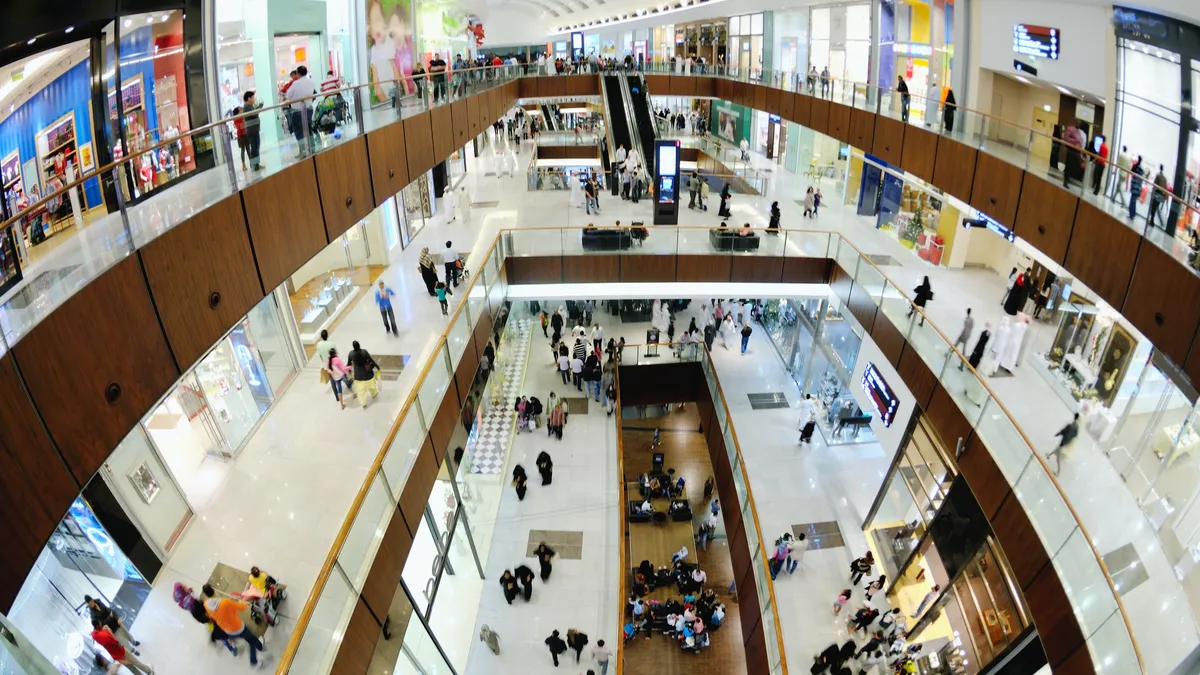Dive Brief:
-
About 70% of malls have lost national retailer in-line tenants as apparel and other specialty retailers have reduced their footprint, and others — like Payless, Gymboree and The Limited — closed stores en masse in bankruptcy, according to a study of 950 malls by Green Street's Advisory & Consulting Group
-
Although half of the top 25 net closing retailers have publicly announced store closures, the other half are closing their stores relatively quietly by choosing not to renew expiring leases, according to the report. Those retailers present significant risk to the sector. Moreover, while the average amount of net closures increased at lower-quality malls, there was a wide dispersion of net closures affecting malls across the quality spectrum, the report notes.
-
In-line tenants generally pay higher rent per square foot and have shorter lease terms than anchors, according to the report. The challenge for mall landlords is to not only track the closures but also assess the quality of new tenants that could fill the spaces, the authors say.
Dive Insight:
Department store anchors, many with high-profile reductions of their physical footprints (notably Macy's and Sears), are leaving gaping holes in many malls, but they're not necessarily landlords' biggest problem, according to Green Street's research.
As department stores have struggled to adapt to changing shopper behavior — both the gravitation to e-commerce and their migration to specialty, off-price and big-box retailers — many have shuttered underperforming locations in lower-quality malls.
Just last week, Macy's announced the closure of 11 more stores, four of which had been previously disclosed. With those closures, the department store chain will have completed 81 of the approximately 100 planned store closures announced in August 2016. Sears, meanwhile, is swiftly unraveling its once ubiquitous presence at America's malls, with an announcement on Tuesday that it will only accelerate its store closures in the new year.
But such high-profile news is skewing the actual financial picture for malls. "In-line tenants … have an outsized impact on mall [income], and their performance offers a preferred indicator of mall health," the report authors — Jim Sullivan, president of Green Street Advisory & Consulting, and Otto Aletter, a senior associate with the same unit — wrote.
Even in this environment, however, there's good news: In its research, Green Street found evidence of many expanding retailers and therefore potential in-line tenants. Those include banners held by private equity firm Sycamore Partners, which is expanding its Torrid and BoxLunch Brands, as well as L Brands' PINK and White Barn brands, and GameStop'sThinkGeek brand.
E-commerce players are also opening physical stores to capture sales and enhance their brands, say Sullivan and Aletter. Peloton, Fabletics, Suitsupply, Warby Parker and Bonobos have all been opening stores over the last year, the authors note.
Simon Property Group with "The Edit" at the Roosevelt Field mall on Long Island and GGP's Chicago-based Water Tower Place are both malls featuring opportunities for shoppers to buy from pure-play e-commerce players.
Malls may need a new approach. That means landlords must work closely with such potential tenants, which are pickier, according to Sullivan and Aletter.
"The obvious issue is that, while there are new emerging brands who are expanding their brick-and-mortar locations within malls, they are being more discerning about mall quality and ownership, and they are opening stores at a slower pace than seen in the past from successful retailers," Sullivan and Aletter wrote. "Landlords now must work harder at building relationships with more selective tenants, with each tenant representing a smaller proportion of overall demand."














